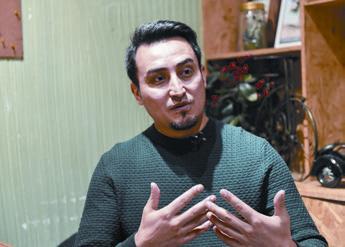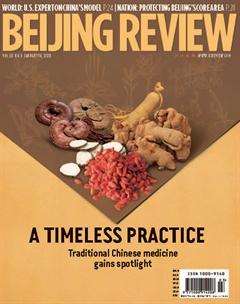Brothers Without Any Label
By Li Fangfang
When photographer Kurbanjan Samats flight landed at Los Angeles International Airport and he proceeded to the immigration desk, the offi cial asked him twice if the Chinese passport he was showing was actually his.
“Sorry, you carry a Chinese passport but you look Mexican,” the doubtful offi cer said.
“You may have heard of the Uygur ethnic group in China,” Kurbanjan answered, explaining why he looked different. China has 56 ethnic communities and some of them have different features from the Han Chinese, the majority community.

The above conversation, which took place in July 2016, forms the beginning of his new book I Am From China.
The United States was one of his stops to meet some of the subjects for his book, people from Xinjiang Uygur Autonomous Region in northwest China who now live outside China. He also went to France, Italy, Germany, Japan, the Republic of Korea and many more places.
The book, published in December 2019, is the last one in his Xinjiang trilogy. The earlier two volumes are I Am From Xinjiang on the Silk Road and I Am Going to Xinjiang. The third book involved the most investment and risks.
Getting rid of labels
Kurbanjans books introduce Chinas ethnic minorities with different beliefs and customs. But one common trait runs through all of them. They all show a desire to work hard for a better life.
Kurbanjan grew up in a diverse culture in Xinjiang where more than 40 ethnic groups, including Kazak, Han, Uygur and Mongol, live in harmony. Even the children are educated in the customs and taboos of different ethnic cultures.
Xinjiang is a place of mystery, due to its remoteness and the huge Gobi Desert standing as a barrier, and outsiders tend to misunderstand the region. In the past, it was stereotyped as a land of beautiful scenery and dancers as well as different cultures. In recent times, Xinjiang and Uygurs are invariably associated with terrorism.
The frustration caused by misunderstanding drove Kurbanjan to do something about the information gap. His effort is to present the real Xinjiang without any label.
As he sees it, people in Xinjiang are no different from others. It is the stereotypes that color peoples judgment about the region. “Everyone is born as crying babies and we will all go back to nature after we die, only in different ways,” the 37-yearold told Beijing Review. “We need to think about human nature regardless of ethnicities and skin colors.”
The empathy was inspired by his father, who would always tell him, “If you want to delight Allah, you should delight your mother fi rst.”
When his mother suggested that Kurbanjans 19-year-old sister give up her studies and get married when the family business was in difficulties, Kurbanjan refused. He looked after the family and supported his sister until she graduated from college and became a teacher.
A part of the preface to I Am From China is by Zhang Xingang, a Hong Kongbased Chinese scholar who has lived overseas for 28 years. “Some people from Xinjiang who are living abroad are easily misled because they are not aware of the real history of Xinjiang and their ethnicities. Xinjiang has been governed by the Central Government since the early Eastern Han Dynasty (25-220), following which the region has always been an important area for the Central Government of China,” Zhang wrote.
To Zhang, people from Xinjiang are “confi dent in learning new languages and getting along with different ethnicities since they grow up in an environment mixed with many ethnicities and languages.”
“The stories in the book prove that everyone is different but similar. Those from Xinjiang and from the rest of China are also hard working, just like you and me,” wrote Wang Hui, a Chinese author and professor with Tsinghua University, in another part of the preface.
Communication and understanding is always the best bridge in the world, added Bai Yansong, a famous media person in China who is a Mongol. “Kurbanjan has built up one bridge after another with his books and documentaries.”
Xinjiangs TCM Envoy
Tursunjans story is a telling example of how culture—and medicine—transcend borders.
As a young boy growing up in Shihezi, a city in Xinjiang Uygur Autonomous Region in northwest China, he was the only Uygur student in his class in high school, coming from the ethnic minority that mainly resides in Xinjiang. Although there were many brilliant students who did well in other subjects, he outperformed everyone when it came to English, which probably built the foundation of his career overseas.
Later he enrolled in Xinjiang College of Traditional Chinese Medicine (TCM), which subsequently became the Xinjiang Medical University. It equipped him with solid TCM knowledge and skills. This time, he was no longer the only student from a minority group. Instead, he met students from various ethnic groups such as Mongol and Kazak. His class had been developed specifi cally for ethnic minorities who enjoyed a preferential policy when they were graded.

